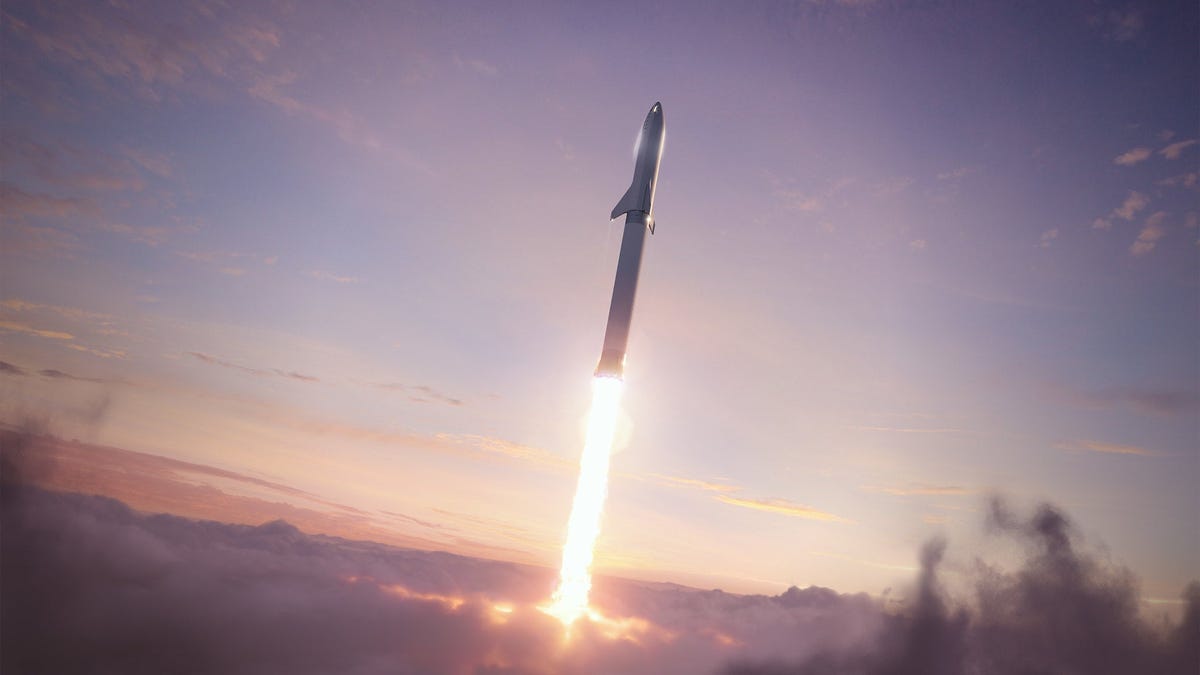
Speaking to scientists yesterday, SpaceX CEO Elon Musk offered an update on the Starship program and how the company plans to perform around a dozen launches of the gigantic rocket next year—the first of which could come as early as January.
Musk spoke on November 17 during a joint virtual meeting of the National Academies of Sciences’ Space Studies Board and the Board on Physics and Astronomy. The primary subject at hand was Starship, but the hour-long conversation drifted to such topics as existential risks, solar power, and planetary protection. Musk’s 18-month-old son, X Æ A-Xii, made a brief but adorable cameo appearance.
“We’re close to our initial orbital launch,” with hopes of performing the inaugural flight of Starship “in January or perhaps February,” said Musk. The plan is to launch the Super Heavy Booster 4 and Starship prototype SN20 from SpaceX’s Starbase facility in Boca Chica, Texas. When stacked together, these two reusable stages create a megarocket that reaches 394 feet (120 meters) high, making it the tallest rocket ever built. The upper stage has already gone through multiple tests, including one in May when the SN15 prototype managed to perform a successful landing.
Musk was quick to temper expectations, saying Starship probably won’t reach orbit during its first attempt to do so. “There’s a lot of risk associated with this first launch, so I would not say that it is likely to be successful, but I think we’ll make a lot of progress,” he said, adding that “I’m confident we’ll get [to orbit] next year, and we intend to have a high flight rate next year.” SpaceX could attempt 12 Starship launches in 2022, or “maybe more,” said Musk.
For the first orbital test of a stacked Starship, the rocket will enter Earth orbit but complete less than a full revolution of Earth. The Super Heavy component will splash down in the Gulf of Mexico, while the upper stage will splash down some 62 miles (100 km) off the northwest coast of Kauai, Hawaii.
G/O Media may get a commission

Starship is designed to transport cargo and passengers to Earth orbit, the Moon, Mars, and possibly beyond. “Ultimately, Starship is designed to be a generalized transport mechanism for the greater solar system,” said Musk. The SpaceX founder has his sights set on using Starship to colonize Mars. “I think, in order for life to become multiplanetary, we’ll need maybe 1,000 ships or something like that,” he said.
Mars aside, SpaceX needs to demonstrate the vehicle as being fit for journeys to the Moon. Indeed, there’s a lot riding on these upcoming tests of the system, as it’s the spacecraft slated to land NASA astronauts on the Moon possibly as early as 2025.
Both Starship stages use Raptor engines, but “engine build rate is currently the biggest constraint on how many vehicles we can make,” said Musk. The current configuration of the Super Heavy requires the use of 29 Raptor engines, but Musk said it’ll eventually need 33. Starship will use six Raptors, bringing the total to 39. That’s a lot, so SpaceX is building a factory in McGregor, Texas, to “make lots of Starships and make lots of engines in parallel,” Musk said.
Musk is hoping to use Starship for operational missions as early as 2023. SpaceX intends to “complete the test flight program next year, which means that it’s probably ready for valuable payloads—not for testing… but actual real payloads—in 2023, so quite soon.”
SpaceX, it needs to be said, still requires regulatory approval from the Federal Aviation Administration to launch the two-stage Starship. The FAA is currently reviewing public safety issues, national security concerns, and potential environmental impacts, among other things. The regulator is now evaluating thousands of written and oral remarks received during public hearings, which closed on November 1. A decision is expected on December 31, in which the FAA will either decide to grant a license or initiate an extensive environmental impact assessment, which could cause considerable delays.
Starship was not the only item up for discussion on Wednesday. When asked about potential existential risks facing humanity, Musk reiterated his concerns over AI’s potential to do us harm (he’s not wrong). He listed nuclear armageddon, declining birth rates, future pandemics, and religious extremism as other threats. On the topic of energy, Musk said ground-based solar farms, and not space-based solar power, should be enough to meet future demand. As for humans contaminating Mars with Earth’s microbes, Musk said it’s probably inevitable, especially given plans to colonize the Red Planet. Still, we should “contain” human activity “to at least one spot” and then not spread our microbes all around the Red Planet, he added.
SpaceX isn’t the only group testing megarockets next year. NASA’s Space Launch System could launch as early as February 12, 2022. Both rockets are meant to play a role in the Artemis program to once again send humans to the Moon.
More: SpaceX Lays Out Plan for First Starship Orbital Test Flight.
